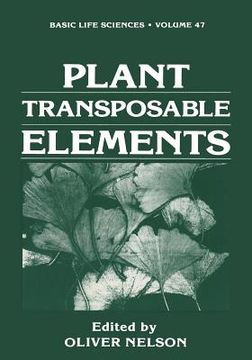Compartir
Plant Transposable Elements (en Inglés)
Nelson, O. (Autor)
·
Springer
· Tapa Blanda
Plant Transposable Elements (en Inglés) - Nelson, O.
$ 133.34
$ 266.69
Ahorras: $ 133.34
Elige la lista en la que quieres agregar tu producto o crea una nueva lista
✓ Producto agregado correctamente a la lista de deseos.
Ir a Mis Listas
Origen: Estados Unidos
(Costos de importación incluídos en el precio)
Se enviará desde nuestra bodega entre el
Lunes 22 de Julio y el
Lunes 05 de Agosto.
Lo recibirás en cualquier lugar de Ecuador entre 1 y 3 días hábiles luego del envío.
Reseña del libro "Plant Transposable Elements (en Inglés)"
Transposon tagging can work. Even though most of our understand- ing about the factors that contribute to a successful tagging experiment has been accumulated from a limited number of experiments using different transposable elements in different genetic backgrounds, it is still possible to draw some conclusions regarding the best experimental strategies for gene tagging. In our experience, Spm has proved to be a good element for transposon tagging. The frequency of recovering mutable alleles in- duced by Spm is not significantly different from that for Ac-Ds or for Mu 6 (summarized in Ref. 22) and varies from about 10- to 10=zr: -8pm has the unique advantage, however, in that all of the members of thiSfumily that have been examined thus far are homologous to each other at the DNA level. Therefore, by combining molecular analysis with genetic segre- gation, it is possible to identify and isolate alleles that are due to insertions of either autonomous or nonautonomous Spm elements. There are definite steps one can take to increase the chances of de- tecting a transposition into the gene of interest. The most important step is to select a genetic background in which the desired phenotype will be easy to screen. If the phenotype is not likely to be mutable, then tester lines should be constructed so as to contain flanking markers that can aid in subsequent segregation analyses.
- 0% (0)
- 0% (0)
- 0% (0)
- 0% (0)
- 0% (0)
Todos los libros de nuestro catálogo son Originales.
El libro está escrito en Inglés.
La encuadernación de esta edición es Tapa Blanda.
✓ Producto agregado correctamente al carro, Ir a Pagar.

